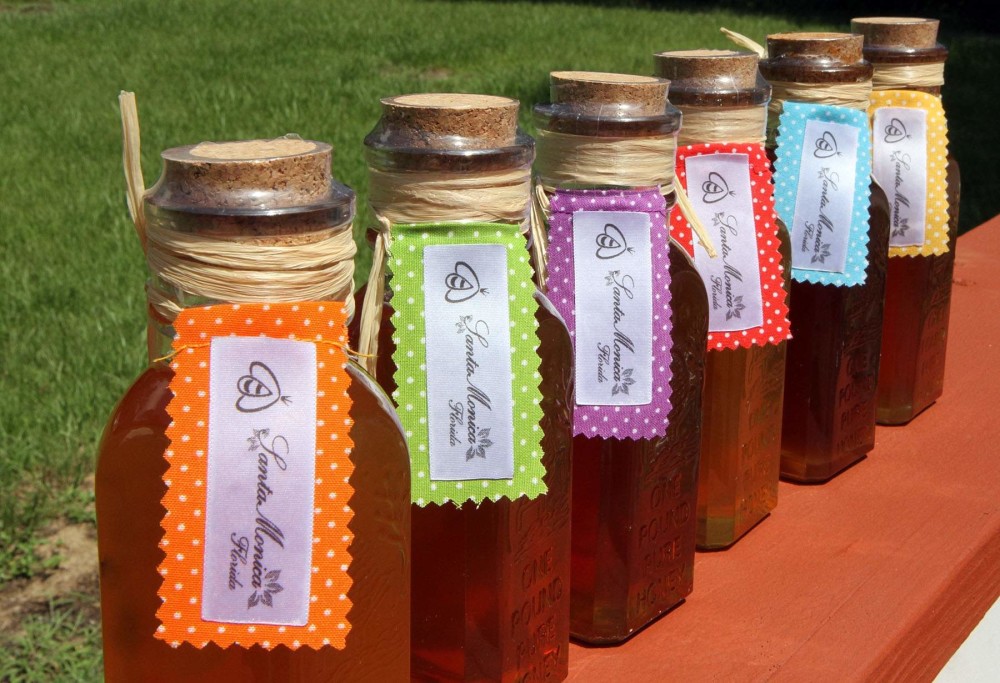By Geoff Fox
Tampa Tribune, Fla.
WESLEY CHAPEL
You won’t find sisters Monica Obando and Jenny Castro swatting at an annoying bee or recoiling in fright at the sight of one.
They are so partial to bees and honey that they are known to eat sliced honeycombs — with a knife and fork — often with a slice of mozzarella cheese.
The women were raised in Colombia, where they say honey is as common as the country’s famous coffee, and both believe that a bee’s honey and venom have healthy properties that have relieved them of significant discomfort.
A couple of years ago, they started their own business, Santa Monica Honey, which they run from their Wesley Chapel home.
“It’s a small operation now, but it’s going to be big,” Obando said.
Owned and operated by the family, Santa Monica Honey currently has 14 beehives across Pasco County. The hives are put in orange groves and other areas with lots of vegetation, such as the conservation area in the family’s backyard.
The business produces an array of flavors — wildflower, gallberry, saw palmetto, Tupelo, orange blossom and blueberry — that they sell at trade shows, festivals and markets across the region, as well as on their website, santamonicaflorida.com.
Last weekend, they had a display at a Christmas In July event in Sun City Center. This weekend, they will be at the Ybor City Saturday Market.
At events, Obando, Castro and other family members dress in pink aprons and shirts, and sun hats with a pink band, all in what Obando described as a “country chic” style that blends with the old-time glass bottles Santa Monica Honey is sold in.
Licensed by the state Department of Agriculture, the business offers samples at events.
“It’s a cultural thing for us, having the honey and tasting the honey,” Obando said. “That’s why we give samples. People here think honey’s just honey.”
The sisters claim varying health benefits to each flavor.
Saw palmetto honey, they say, is beneficial for prostate health in men, as well as women’s hormones, and wildflower honey is effective in battling allergies.
Of course, bees are as well-known for their painful stings as for the nectar they collect from plants. But their venom is beneficial, as well, the sisters say.
Thanks to apitherapy, the treatment of maladies with bee stings, Obando considers herself “cured” of arthritis, and Castro said bee stings helped eliminate bursitis from her shoulder, which a doctor said would require surgery.
“Before the bee stings, I could only lift my arm like this,” Castro said, holding it parallel to the ground.
“Now, I can do this,” she said, making a windmill motion.
Although honey that has not been chemically altered is packed with antioxidants and can help bolster one’s metabolism, not all of the sisters’ claims are backed by “modern medicine,” said David Westervelt, an assistant chief in the state Department of Agriculture’s Division of Plant Industry.
“Apitherapy is practiced in Europe and all over the world,” Westervelt said. “With the increase of homeopathic medicine in Florida, there are more and more people who do it. The benefits have been shown, but (American) doctors aren’t recognizing the science.
“The American Apitherapy Society swears by it, and people treat everything from eye ailments to rheumatoid arthritis to multiple sclerosis. It’s not a cure-all, but a homeopathic treatment.”
However it’s characterized, Obando and Castro say it works.
When the family is not preparing for an event, bottling honey or tending the bees, work mostly done by Obando’s husband, Juan, who she credits for doing “the heavy lifting,” Obando absorbs knowledge about bees and honey.
Her home library includes what she characterized as rare titles on the subject, such as “The Bible of Bee Venom Therapy,” “Bee In Balance: A Guide to Healing the Whole Person With Honeybees, Oriental Medicine and Commonsense” and “Honeybee Democracy,” an analysis of honeybee neurobiology and behavior that was published by Princeton University Press.
“When I was a child, I had rheumatic fever that almost crippled me,” Obando said. “I got a heart murmur, and then I got the arthritis.
“I took antibiotics and it went away, but it came back in 2011. I was very sick. I could barely move.”
Her distrust of pharmaceutical medicine led Obando to an American Apitherapy Society meeting in Orlando. After that, she and Castro elected to try bee-sting therapy.
They each got 12 stings every three days for seven months.
“This is what people call folk medicine, like it’s witchcraft or something,” Castro said. “But, it’s working” for me.














































































































































































































































































































































































